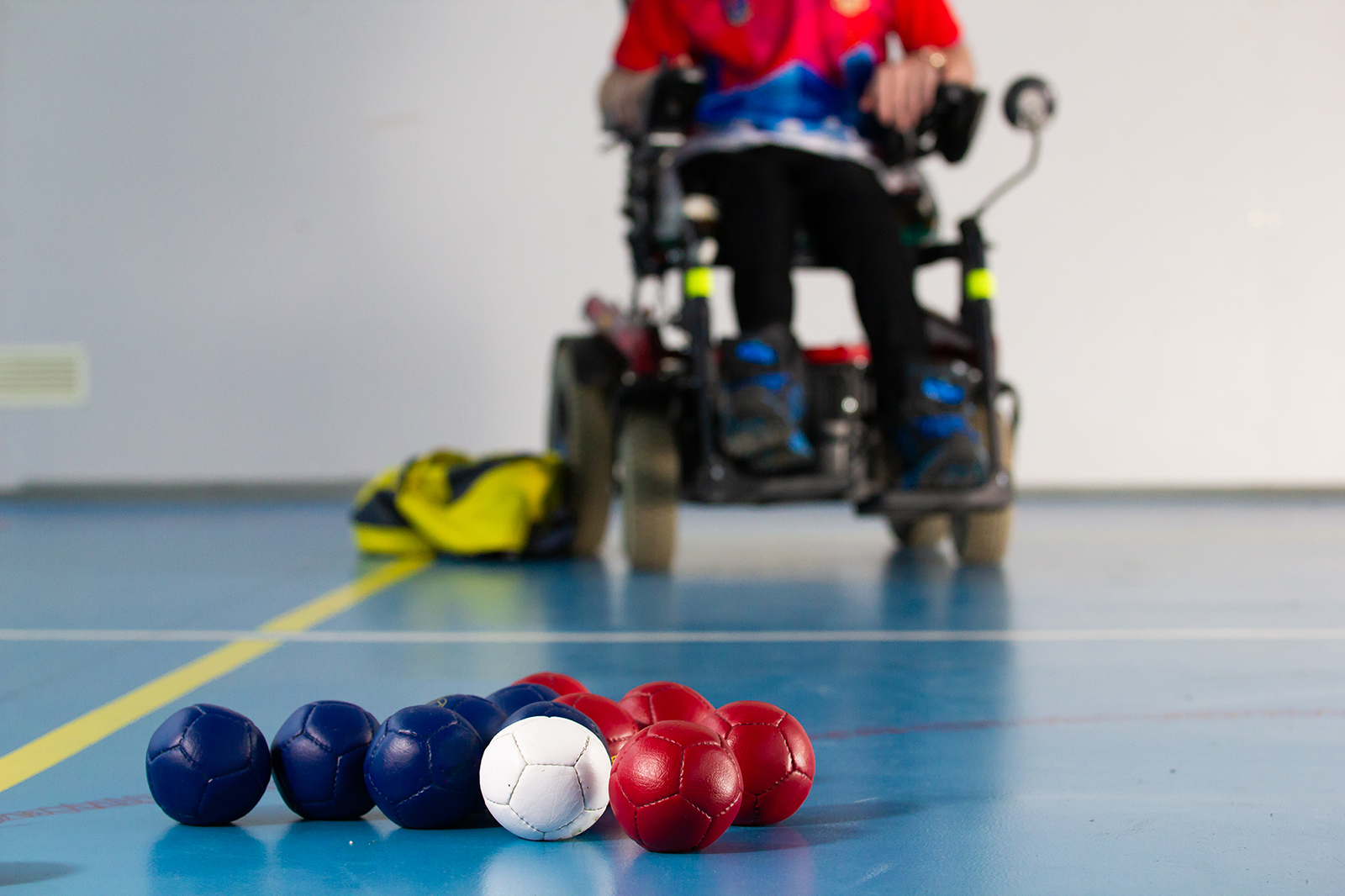Sports Tech@TDK
Curling - A thrilling and intellectual sport, also known as "chess on ice"
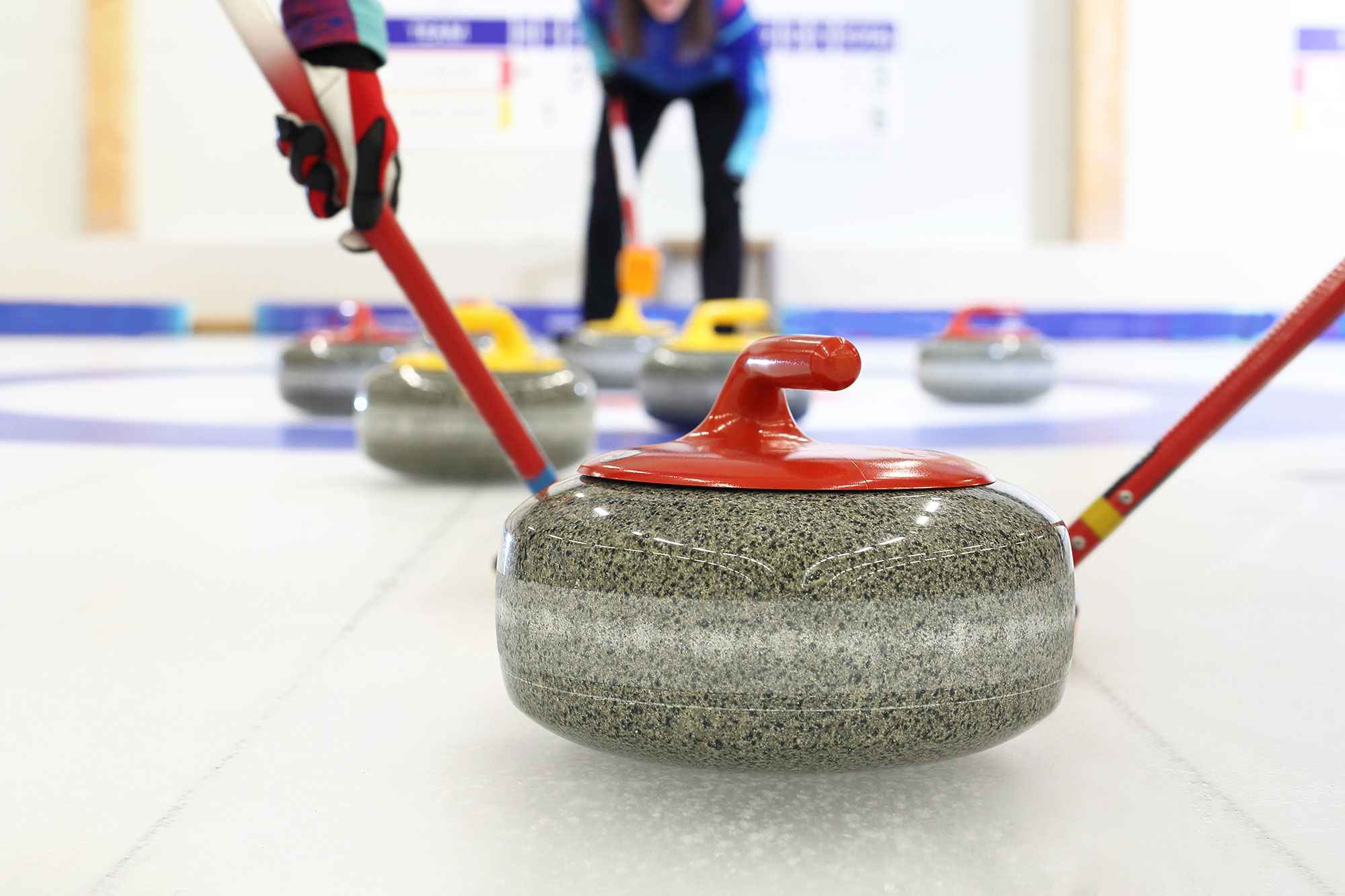
Curling is a sport in which a granite stone weighing approximately 20 kg, slides across the ice where players must keep it within a concentric circle (house) by blocking or repelling an opposing stone. Believed to have originated in the 15th century in Scotland as portrayed by the painter Bruegel’s masterpiece 'The Hunter in the Snow' some villagers enjoying curling in a frozen pond.
It developed as a winter sport in Europe and Canada, and spread to other countries around the world. The first men's world championships were held in 1959; the women's world championships from 1979; and in 1998 it was adopted as an official sport of the Winter Olympics Games.
Advanced strategies and tactics to keep the spectators entertained, and curling rules
Curling is played by four players in a team. Two teams take it in turns to go, with one end consisting of 16 throws (two throws per player) – the equivalent to one innings in baseball. This is repeated 10 times (10 ends) to make up one game.
The team with the stone closest to the centre of the concentric circle (tee) in each end scores a point, and the winner is determined by the total score of the ten ends.
Curling, also known as "chess on ice", is a thrilling and highly intellectual sport. Just as in chess and shogi, where "reading" the board is crucial, curling is won or lost by the strategy of stone placement. Even if the stones are well placed in the house, it is no good if they are hit by the opposing team's stones and pushed out of the house. Therefore, the basic strategy is to collect your team's stones in an advantageous position by placing your team's stones in a position that obstructs the opposing team's stones or by flicking the opposing team's stones out of the house. Thus, the latter team has the advantage. But the rule is that the winning team from the previous end will be the first team to attack in the next end. The game, which lasts approximately 2 hours and 30 minutes, is a fascinating experience to watch, as the players read each other's strategies and play the game.
The path and speed of the stones leaving the thrower's hands is controlled by the sweeper brushing the ice surface. This adds to the fun of curling. Ice prepared for curling is called a sheet, and the sheet is covered with fine ice grains.
The purpose of sweeping with the brush is to clear the sheet of ice grains to reduce drag and to slightly melt the surface of the ice by frictional heat, thereby slightly adjusting the course and speed. The skip (captain) is in charge of giving these commands. It is not uncommon for the final throw to be a major upset, with breathtakingly tense scenes unfolding at each end.
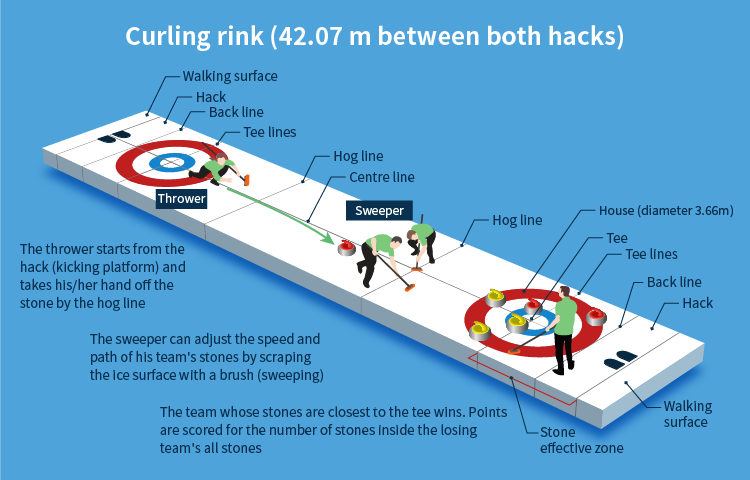
How curling stones slide and curve
Curling makes good use of a scientifically interesting phenomenon. It seems obvious that heavy stones slide on ice, but on smooth polished glass or metal, stones do not slide as much. The stone’s sliding is related to the fine ice grains (pebbles) that cover the rink. When the stones are thrown out, these pebbles are crushed and form a thin film of water on the ice, which acts like a lubricant. Ice skating also slides well due to the reduced friction caused by the film of water between the blade and the ice surface. The bottom of a curling stone is not flat, but has an indentation, called a cup, and the surrounding edges act in the same way as the blades in skating.
When the stone is thrown, it is given a clockwise or anti-clockwise rotation. This rotation gives curling its characteristic curves. When an object is rotated and moved on a tabletop, for example, a left curve is produced if the rotation is clockwise, and a right curve if the rotation is anti-clockwise. However, in curling, the curves are in the opposite direction as ice grains are also involved in this motion. The stones crush the ice grains more strongly on the right side of the front of the stones in a clockwise direction, for example. Therefore, the reduction in frictional force, due to the water film produced, is also greater on the right side, resulting in a right hand curve, opposite to the rotating object on the tabletop. Sophisticated techniques are often used to get behind the opponent's stone by sweeping.
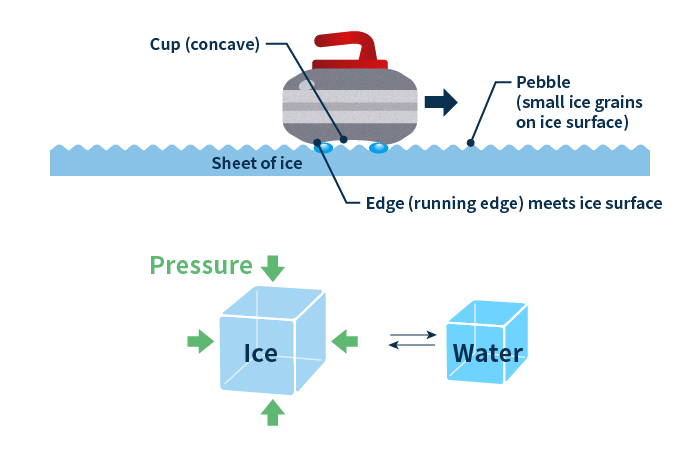
The edge of the stone crushes the pebble and creates a thin film of water, which reduces frictional force and slides well. When pressure is applied to ice (solid), its volume decreases to water (liquid), and when the pressure is removed, it returns to ice. This phenomenon is called "ice restoration," and in curling, the stones are made to slide by utilizing this phenomenon.
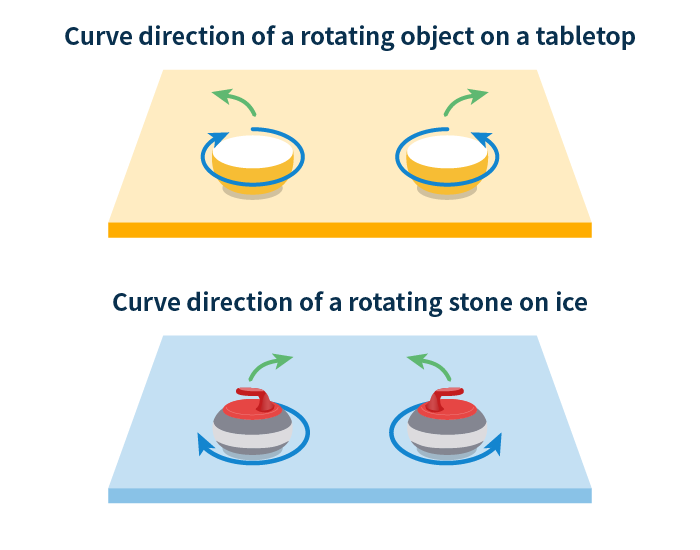
When the object on the table is rotated clockwise, the path becomes a left curve, and when it is rotated counterclockwise, it becomes a right curve. On the other hand, when the stones on the ice are rotated clockwise, the path becomes a right curve, and counterclockwise, a left curve.
Flip chip mounting system using ultrasonic vibration friction
Also used cleverly in the IC manufacturing process. A semiconductor chip cut from a wafer is called a bare chip. An IC with many legs (leads) is a product made by placing the bare chip on a lead frame, wiring it using wire bonding, cutting it and then packaging it. Wire bonding is a method of joining thin gold (Au) wires while feeding them out of a head. The gold wire is melted and bonded by friction with high-speed ultrasonic vibrations under pressure.
If bare chips are mounted directly on a printed circuit board, no wiring space, leads or packages are required, thus resulting in significant space savings and improved performance. This is made possible by the flip chip mounting system. Bare chips have wiring terminals called bumps on their surface. In the wire bonding method, the bump surface is on top, but in the flip chip mounting system, the bare chip is inverted (flipped) and directly bonded to the pads on the printed circuit board side.
There are various joining methods for flip chip mounting. However, the solder methods with high melting points have problems with thermal stress on electronic components, while thermo-compression bonding methods using conductive paste have difficulties in reducing bonding time.
The TDK AFM-15 series of flip chip mounting systems uses a method whereby gold (Au) bumps and gold (Au) pads are joined by pressure from the head and friction from ultrasonic vibration, boasting industry-leading high-speed joining and high accuracy. The AFM-15 series is also ideal for mounting devices with many bumps and SMD components, such as LEDs, CMOS sensors, TCXOs and RF modules, etc. The AFM-15 series is expanding its field of application into the automotive and industrial equipment sectors, as well as various electronic devices.
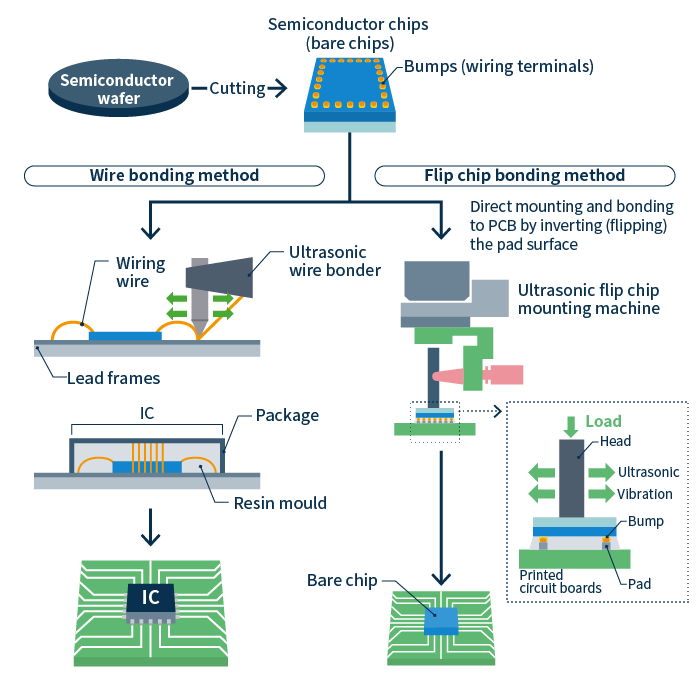
Compared to the wire bonding method, the flip chip bonding method contributes to miniaturization and higher performance of electronic devices by significantly reducing the mounting area and shortening the bonding distance.
Flip chip mounting system AFM15 series
High-performance IC chip mounting system (mounter) with flip chip bonding method using ultrasonic and thermo-compression bonding, employing a highly rigid and lightweight head designed to minimise damage to IC chips. Three types are available with maximum loads of 25 N, 50 N and 70 N. The 25N type boasts one of the industry's fastest mounting speeds of 0.72 s/chip (including 0.2 seconds process time). The 100N type is suitable for IC chips with many bumps.

TDK is a comprehensive electronic components manufacturer leading the world in magnetic technology




